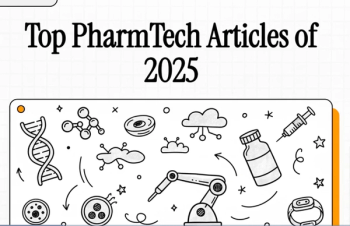
- Pharmaceutical Technology-06-02-2007
- Volume 31
- Issue 6
Out of Date, Out of Touch
Look ahead to keep from falling behind.
Gazinta-heit
"I was the new employee and needed some information," says our GMP Agent-in-Place. "Our company makes 300 products, and some products use common ingredients. We had to make a change in one commonly used ingredient and wanted to be sure that we had evaluated the effects for all the necessary products. Because I was new, I didn't know how to figure this out except by looking at all the formulas, and I voiced this frustration to my boss. She told me to use the 'Gazinta Report.'
"So I asked several people for this report, and was given a six-inch thick computer printout. But when I looked at the title, it didn't say Gazinta, and I thought I had the wrong data. When I asked my boss again, she laughed and told me to read the name fast. Apparently, the original request for what is commonly known as 'where used' data was requested as 'what the ingredient goes into,' and the printout was titled 'Goes Into Report.'"
When good sales are bad news
"Our product is ancient, but it is one of the reasons this factory was built in the 1950s," explains our GMP Agent-in-Place. "The product starts with frozen animal-based ingredients and progresses through several extraction and purification steps, all developed in the 1950s and with 1950s materials.
"As time passed, however, sales declined, and production tailed off. The raw materials that were once sufficient for two or three years now could last 10 years. Even so, we depleted these inventories and had to reorder, especially one key purification media. At the time, the vendor said it hadn't manufactured the media for the past 10 years.
"We searched and tested material from other sources, but the yields from using the alternatives were very low. Our purchasing agent negotiated with the supplier for a one-time manufacturing run of a 'lifetime supply.' The supplier brought an employee out of retirement to provide the needed manufacturing expertise, and made enough to last 10–15 years given our declining sales of the product.
"That was nine years ago.
"Since then, the only competitor for the finished product has left the market, so our sales have increased. Our 15-year supply of media is gone. Once again we called on our supplier, begging them to make more for us. But now the answer was different. The necessary equipment had been scrapped, the retired employee had passed on, and the formulas had been destroyed. And so we are stuck using a lesser yielding alternate media."
Paper-trained
"We had been testing and releasing a liquid parenteral product for years," explains our GMP Agent-in-Place. "The stability testing had always passed until the pH failed when tested on stability, and no one could figure out why. We investigated changes in container, closure, excipients, the raw material, and even our stability storage area and came up with nothing. The quality-control laboratory was asked to check out the performance of the pH method to be sure it was followed correctly. We had left this to last because we had thought no one could screw up a pH test! When the laboratory manager asked the technician how she normally performed the pH test for release of the product, he got the answer: 'I used pH paper like I always have, and compare the color change to the schema on the bottle.'"
Pharmaceutical Technology's monthly "Agent-in-Place" column distills true-life cautionary tales from the secret files of Control, a senior compliance officer. If you have a story of clueless operators, oblivious management, inopportune lapses of judgment, or Murphy's Law in action, please send it to Control at
Articles in this issue
over 18 years ago
Building Monoclonal Antibody Productionover 18 years ago
Pharma Capsulesover 18 years ago
Nanotechnology Advances in Drug Deliveryover 18 years ago
Setting an Exampleover 18 years ago
Pharmaceutical Technology's Manufacturers' Rankingsover 18 years ago
Manufacturing Issues Shape Follow-On Biologics Debateover 18 years ago
Is Your Company Lucky or Smart?over 18 years ago
In the Spotlight June 2007over 18 years ago
Balancing ActNewsletter
Get the essential updates shaping the future of pharma manufacturing and compliance—subscribe today to Pharmaceutical Technology and never miss a breakthrough.




